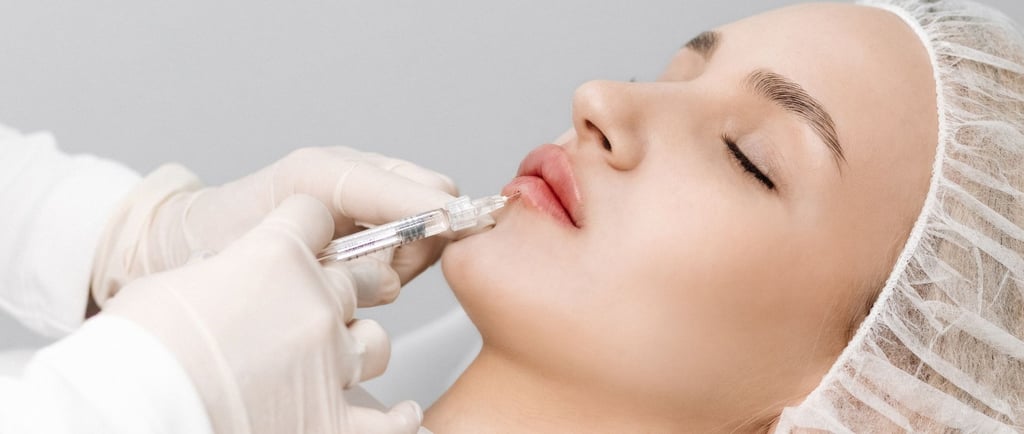Unrealistic Beauty: Are Body Mods the Problem?
Are digitally altered images, exaggerated curves, and cosmetic enhancements to blame, or is the issue deeper? Explore body shaming, inclusivity, and femme bodies in the digital age. [edited on 06/02/2025]
Tejnoor
2/28/20213 min read


In 2021, technology has made beauty standards more diverse than ever, with access to endless creative and educational platforms. From TV stars rocking exaggerated curves to #fitspo influencers with sculpted muscles, overweight YouTube creators celebrating their bodies, amputee runway models in major fashion shows, and makeup lines for people of color, inclusivity is thriving. This content isn’t just created—it’s widely consumed.
But with digital creation comes a downside: body shaming. Despite body positivity’s rise, criticism persists—think comments like “lose weight to look prettier,” mocking body hair, or calling a woman’s muscular build “manly.” Merriam-Webster defines body shaming as “the act or practice of subjecting someone to criticism or mockery for supposed bodily faults or imperfections.”
This post focuses on femme bodies, which face the most scrutiny in beauty standard debates. When we talk “unrealistic” beauty standards, three practices spark the most heated discussions: digital manipulation creating false images, exaggerated hourglass figures, and lip injections. Are individuals who modify their bodies to these extremes fueling harmful ideals, or is the issue how we critique them? Let’s dive in.
What Is Beauty and Who Is It For?
If modified bodies create unrealistic standards, would removing them reduce the fetishization of exaggerated traits? Big lips and hourglass figures were coveted long before modern influencers redefined “big.” Would erasing these bodies fix unfair standards or just shift power? We need to ask: who sets these standards, and who are they for?
Beauty standards are arbitrary, and criticizing hypersexualized bodies as the problem often reinforces the male gaze. It suggests these bodies exist only for male validation, which oversimplifies intent. But assuming everyone who modifies their body does so for sexualization is equally unfair. People’s choices are complex, tied to personal empowerment, cultural identity, or self-expression.
Access to Beauty
The argument against “unrealistic” bodies—whether unattainable naturally or too costly—falters under scrutiny. We’re born with the genetics we get; our parents’ pairing influences this, but the outcome is beyond our control. Exercise and nutrition can shape us “naturally,” but what does “natural” even mean? Terms like natural remedies, foods, or bodies are vague and often problematic.
Do chemical-based skincare products create unrealistic standards? What about tattoos or piercings, widely accepted body mods? Plastic surgery is pricey, but so are laser hair removal, dental work, or Lasik—yet we don’t criticize those as often. The hypocrisy is glaring. Some argue cosmetic changes are okay only if they evoke sympathy, like fixing a broken nose or post-cancer reconstruction. This selective judgment is disturbingly common and reeks of subjective gatekeeping.
Take me, for example. I rock vibrant red-orange hair, bleached from my natural dark brown, which damages my curls but earns me “badass” compliments. My tattoos get head turns, and my gym-honed body—built with an hour daily most claim they don’t have—draws male attention. Am I creating an unrealistic standard because my look takes time or money? The logic used to criticize modified bodies could easily target me.
Inclusivity
With such diverse representation today, why isn’t our mindset more open? It boils down to one question: should everyone have the freedom to present their body as they wish? Whether it’s bold makeup, tattoos, or breast implants, personal choice shouldn’t require justification. If we’re worried about mental health—especially for impressionable youth—we must also consider how shaming modified bodies harms those who choose them.
Marginalized Bodies and Privilege
The “natural bodies” movement often excludes marginalized groups, using ableist, transphobic, or elitist language. It’s anti-feminist, serving the male gaze, and can be racist when it ignores body modifications rooted in cultural history. Acting like this movement is inclusive masks a power shift: only those who naturally fit desired standards gain access. If we criticize the elitism of costly beauty mods, we must also recognize the privilege of fitting norms without effort.
As minorities, even we overlook our privilege as cis, heterosexual, able-bodied individuals. Greater awareness could end these debates among progressives.
Influence on Children
It’s valid to worry about kids and unsafe trends, but health concerns should be addressed as such, not as beauty issues. The world is risky; prioritizing your autonomy over someone else’s mental health is unfair.
The Catfishing Argument
Online platforms often portray “false” selves, raising ethical questions about creative freedom. But an online presence isn’t reality. We must teach kids what real bodies look like and how to navigate digital spaces, just as we teach consent.
How to Alter Beauty Standards Without Being Oppressive
Lead by example, don’t perpetuate shaming. Criticizing specific bodies doesn’t foster inclusivity—it invalidates identities. If you don’t want kids comparing themselves to influencers, stop doing it yourself. Celebrate content showing bodies in all their variety, like videos highlighting “bodies that look like this… also look like this.”
I admire creators like Stephanie Buttermore and Jeff Nippard, who inspire millions with facts and positivity without tearing others down. Want to ask if someone’s body mods are “real”? Go ahead—but question why you’re asking.
Educate yourself. When you think, “I wouldn’t do that,” consider the impact of saying it aloud. Your choices are valid, but so are others’. Let’s build a world where all bodies are celebrated, not shamed.
<a href="https://www.vecteezy.com/free-photos/plastic-surgery">Plastic Surgery Stock photos by Vecteezy</a>
Achieve
Transform your fitness with personalized coaching today.
CONTACT
Thrive
one@tejnoor.com
© 2025. All rights reserved.
